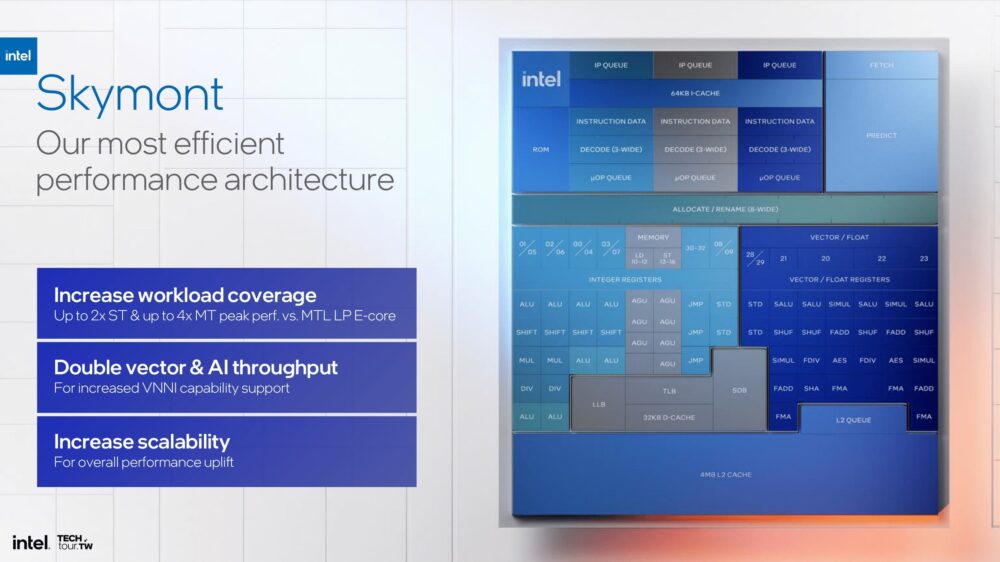What Lunar Lake REALLY Means for Your Next Laptop
 Intel is making major changes with their new Lunar Lake series of processors, introducing new P-cores and E-cores, a brand new NPU for those sweet Copilot+ laptops, as well as giving us a glimpse at their new Battlemage graphics, which power the integrated GPU solution inside.
Intel is making major changes with their new Lunar Lake series of processors, introducing new P-cores and E-cores, a brand new NPU for those sweet Copilot+ laptops, as well as giving us a glimpse at their new Battlemage graphics, which power the integrated GPU solution inside.
With AMD’s Strix point looking quite good in terms of clock speeds, cores, and graphics, Lunar Lake will have their work cut out for them. Snapdragon is also presenting quite a challenge with its X Elite and X Plus chips. Let’s take a look at the table below and see what’s new about the Lunar Lake chips.
Specs table
| Intel CPU Architecture Generations | |||||
| Alder/Raptor Lake | Meteor Lake | Lunar Lake | Arrow Lake | Panther Lake | |
| P-Core Architecture | Golden Cove/ Raptor Cove | Redwood Cove | Lion Cove | Lion Cove | Cougar Cove? |
| E-Core Architecture | Gracemont | Crestmont | Skymont | Crestmont? | Darkmont? |
| GPU Architecture | Xe-LP | Xe-LPG | Xe2 | Xe2? | ? |
| NPU Architecture | N/A | NPU 3720 | NPU 4 | ? | ? |
| Active Tiles | 1 (Monolithic) | 4 | 2 | 4? | ? |
| Manufacturing Processes | Intel 7 | Intel 4 + TSMC N6 + TSMC N5 | TSMC N3B + TSMC N6 | Intel 20A + More | Intel 18A |
| Segment | Mobile + Desktop | Mobile | LP Mobile | HP Mobile + Desktop | Mobile? |
| Release Date (OEM) | Q4’2021 | Q4’2023 | Q3’2024 | Q4’2024 | 2025 |
First things first, Intel is targeting the Low-powered mobile segment with these chips, so except slightly lower TDPs. These chips are for thin and light laptops, that can still perform rather well. Efficiency and battery life are the top priorities here. For the manufacturing, Intel uses TSMC’s N3B (3nm) for the cores and N6 (6nm) for the SoC tile. In terms of the layout, Lunar Lake chips will feature 4P + 4E cores, as well as 8 threads. Yes, you read correctly, Intel is phasing out hyperthreading with the logic being that now the E-cores are powerful enough to take a bigger part of the workload.
New P-cores: Welcome to the Lion Cove
The new P-cores are dubbed Lion Cove, getting an IPC (Instructions per clock) increase of 14% from the previous-gen Redwood Cove cores. IPC is directly linked to the clock speed. While clock speed tells you how many cycles a CPU can complete in a second, IPC tells you how many tasks a CPU can conduct in each cycle. A good balance between the two ensures great performance. A CPU with a high IPC but low clock speed can outperform a chip with a low IPC but a higher clock speed. Cores also come into play here, as with more cores, the chip can do more total cycles, and so forth.
The cores have also been made more responsive to working conditions, with a new AI tuning feature instead of the older static thermal guards. Clock speed adjustment has been made finer, with 16.67MHz intervals, rather than the previous 100MHz intervals.
The Star of the show: New Skymont E-cores
These new Skymont cores are what really put Lunar Lake on the map, with IPC increases of 38% in INT workloads and 68% in FP workloads when compared to the Low Power Cresmont cores of Meteor Lake. With such a high jump, the new Skymont E-cores are just as powerful as the Raptor Cove P-cores, with an IPC increase of 2%. INT workloads are tasks with integers (aka whole numbers), while FP workloads are tasks with a floating point (aka fractions). Using fractions in your calculations can improve accuracy by a lot, at the cost of speed.
New NPU 4: 48 TOPS of AI Performance
In order to comply with the Copilot+ program, the new NPU 4 from Intel brings 48 TOPS (Trillion operations per second) of INT8 performance, a nearly 4X increase over the previous-gen NPU 3. INT8 is a data format, an 8-bit whole number. It’s a data format used in most lighter AI Models, which is what you’ll be running on these NPUs. All in all, it means that the NPU can perform 48 Trillion operations with 8-bit integers per second, like division, subtraction, and others.
Intel Arc Battlemage: Improved AI performance with new XMX Engine
Previous Meteor Lake processors had the Arc Alchemist graphics architecture for their integrated GPU. Now, we’re moving on to Battlemage. Intel refers to 67 TOPS of computational power, which is a 1.5X increase over the last-gen Alchemist, a change brought forth thanks to new XMX engines, which are important for ray tracing and overall AI acceleration. The new GPU architecture now supports the new VVC video codec, which is 10% lighter than the AV1, a competing video codec. Thankfully, AV1 support is still here, which is free to use and open-sourced, instead of VVC, which sits under the umbrella of MPEG and requires royalty payments.
Overall, this new Lunar Lake architecture will make laptops more efficient and more powerful, thanks to much-improved Skymont E-cores that can easily partake in high-intensity workloads. We’re really excited to see laptops with these new CPUs, as well as maybe a handheld gaming console powered by a Lunar Lake and Battlemage combo, which would be just great.












